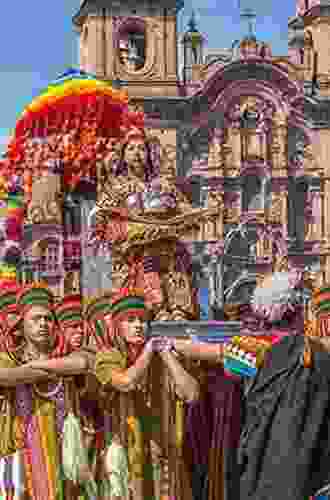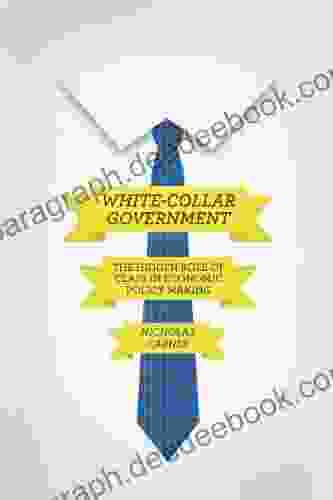The Routledge Handbook of Policy Design: A Comprehensive Guide to the Field

The Routledge Handbook of Policy Design is a comprehensive and authoritative guide to the field of public policy design. Edited by leading scholars Michael Howlett and M. Ramesh, the handbook brings together a team of international experts to provide a state-of-the-art overview of the key concepts, theories, and methods used in policy design.
The handbook is divided into seven parts, each of which covers a different aspect of policy design. Part I provides an overview of the theoretical foundations of policy design, including the concept of policy as a problem-solving tool, the role of values in policy design, and the different types of policy instruments that can be used to achieve policy goals. Part II examines the process of policy design, from problem identification and goal setting to the development and implementation of policy options. Part III focuses on the evaluation of policy outcomes, including the different methods for measuring policy effectiveness and the challenges of attributing policy impacts to specific interventions. Part IV discusses the role of stakeholders in policy design, including the different ways that stakeholders can participate in the policy process and the challenges of managing stakeholder conflicts. Part V examines the political context of policy design, including the role of institutions, power, and ideology in shaping policy outcomes. Part VI provides a comparative analysis of policy design in different countries and regions, highlighting the different approaches to policy design that have been adopted around the world. Part VII concludes the handbook with a discussion of the future of policy design, including the challenges and opportunities that lie ahead for the field.
The Routledge Handbook of Policy Design is an essential resource for anyone interested in the study or practice of public policy. It provides a comprehensive and authoritative overview of the key concepts, theories, and methods used in policy design, and it offers a valuable resource for policymakers, researchers, and students alike.
4.5 out of 5
| Language | : | English |
| File size | : | 6937 KB |
| Text-to-Speech | : | Enabled |
| Screen Reader | : | Supported |
| Enhanced typesetting | : | Enabled |
| Word Wise | : | Enabled |
| Print length | : | 483 pages |
| X-Ray for textbooks | : | Enabled |
The Routledge Handbook of Policy Design begins by introducing the key concepts of policy design. These concepts include:
- Policy: A course of action or inaction taken by a government or other public authority to address a public problem or issue.
- Policy design: The process of developing and implementing policies.
- Policy instruments: The tools that governments use to implement policies, such as laws, regulations, taxes, and subsidies.
- Policy outcomes: The effects of policies on the target population or issue.
- Policy evaluation: The process of assessing the effectiveness of policies.
These concepts are essential for understanding the field of policy design. They provide a framework for thinking about the different aspects of policy design and for evaluating the effectiveness of different policies.
The process of policy design is complex and iterative. It typically involves the following steps:
- Problem identification: Identifying the public problem or issue that the policy is intended to address.
- Goal setting: Establishing the desired outcomes of the policy.
- Policy development: Developing and evaluating different policy options.
- Policy implementation: Putting the policy into effect.
- Policy evaluation: Assessing the effectiveness of the policy and making necessary adjustments.
The process of policy design is not always linear. It is often necessary to revisit earlier steps in the process as new information or insights emerge. However, the steps outlined above provide a general framework for thinking about the policy design process.
The evaluation of policy outcomes is an essential part of the policy design process. It allows policymakers to assess the effectiveness of their policies and to make necessary adjustments. There are a variety of different methods for evaluating policy outcomes, including:
- Quantitative analysis: Using data to measure the effects of policies on the target population or issue.
- Qualitative analysis: Using non-numerical methods to assess the effects of policies, such as interviews, focus groups, and case studies.
- Mixed methods: Combining quantitative and qualitative methods to provide a more comprehensive evaluation of policy outcomes.
The choice of evaluation method depends on the specific policy and the available data. However, all evaluations should be conducted in a rigorous and objective manner.
Stakeholders are individuals or groups who are affected by or have an interest in a policy. They can include citizens, businesses, interest groups, and government agencies. Stakeholders can play a variety of roles in the policy design process, including:
- Providing input on policy development: Stakeholders can provide valuable insights into the problem that the policy is intended to address and the potential effects of different policy options.
- Participating in policy implementation: Stakeholders can help to implement policies and to ensure that they are implemented effectively.
- Evaluating policy outcomes: Stakeholders can provide feedback on the effectiveness of policies and help to identify areas for improvement.
The involvement of stakeholders in the policy design process can help to ensure that policies are more responsive to the needs of the target population and that they are more likely to be implemented effectively.
The political context in which policy design takes place has a significant impact on the outcome of the process. Factors such as the distribution of power, the role of institutions, and the prevailing ideology can all shape the design and implementation of policies.
In democratic societies, the political context is often characterized by competition between different political parties and interest groups. This competition can lead to the adoption of policies that are designed to appeal to the median voter or to specific interest groups. In authoritarian societies, the political context is often characterized by the concentration of power in the hands of a single individual or group. This can lead to the adoption of policies that are designed to maintain the power of the ruling elite.
The role of institutions in the policy design process is also important. Institutions are the rules and procedures that govern the behavior of individuals and organizations. They can shape the way that policies are developed, implemented, and evaluated. For example, in countries with strong institutions, policies are more likely to be based on evidence and to be implemented effectively.
The prevailing ideology can also have a significant impact on the design of policies. Ideology is a system of beliefs that shapes the way that people view the world and their place in it. It can influence the way that people define problems, set goals, and evaluate policy options. For example, in countries with a strong individualistic ideology, policies are more likely to be designed to promote individual freedom and self-reliance. In countries with a strong collectivist ideology, policies are more likely to be designed to promote social solidarity and cooperation.
The political context in which policy design takes place is complex and ever-changing. However, by understanding the key factors that shape the political context, policymakers can increase their chances of success in designing and implementing effective policies.
Comparative policy design is the study of policy design across different countries and regions. It seeks to identify the commonalities and differences in the way that policies are designed and implemented in different contexts. Comparative policy design can help to identify best practices and to inform the
4.5 out of 5
| Language | : | English |
| File size | : | 6937 KB |
| Text-to-Speech | : | Enabled |
| Screen Reader | : | Supported |
| Enhanced typesetting | : | Enabled |
| Word Wise | : | Enabled |
| Print length | : | 483 pages |
| X-Ray for textbooks | : | Enabled |
Do you want to contribute by writing guest posts on this blog?
Please contact us and send us a resume of previous articles that you have written.
 Chapter
Chapter Story
Story Genre
Genre Paperback
Paperback E-book
E-book Newspaper
Newspaper Bookmark
Bookmark Glossary
Glossary Foreword
Foreword Synopsis
Synopsis Annotation
Annotation Footnote
Footnote Manuscript
Manuscript Scroll
Scroll Tome
Tome Bestseller
Bestseller Classics
Classics Library card
Library card Narrative
Narrative Memoir
Memoir Encyclopedia
Encyclopedia Dictionary
Dictionary Thesaurus
Thesaurus Narrator
Narrator Character
Character Catalog
Catalog Card Catalog
Card Catalog Stacks
Stacks Study
Study Research
Research Journals
Journals Reading Room
Reading Room Rare Books
Rare Books Special Collections
Special Collections Study Group
Study Group Awards
Awards Reading List
Reading List Book Club
Book Club Theory
Theory Textbooks
Textbooks Pat Walsh
Pat Walsh Crystal Kinn Tarver
Crystal Kinn Tarver James B Stewart
James B Stewart Dale Brown
Dale Brown Joycelyn M Pollock
Joycelyn M Pollock Sabina Berman
Sabina Berman Justin Lewis
Justin Lewis Susan L Schulman
Susan L Schulman Hendrik Lambertus
Hendrik Lambertus Edward C Chang
Edward C Chang Musa Khan Jalalzai
Musa Khan Jalalzai Mya Grey
Mya Grey Sara Mcferrin
Sara Mcferrin Robert Gaylon Ross
Robert Gaylon Ross Peter Coffin
Peter Coffin Steven E Siry
Steven E Siry Jennifer Churchman
Jennifer Churchman Darrell M West
Darrell M West Lanny J Davis
Lanny J Davis Karl Jackson
Karl Jackson
Light bulbAdvertise smarter! Our strategic ad space ensures maximum exposure. Reserve your spot today!
 Carl WalkerFollow ·6.1k
Carl WalkerFollow ·6.1k Morris CarterFollow ·3.9k
Morris CarterFollow ·3.9k Thomas PynchonFollow ·3.5k
Thomas PynchonFollow ·3.5k Eric HayesFollow ·8.7k
Eric HayesFollow ·8.7k Devin RossFollow ·2.9k
Devin RossFollow ·2.9k Simon MitchellFollow ·7.3k
Simon MitchellFollow ·7.3k Yukio MishimaFollow ·17.4k
Yukio MishimaFollow ·17.4k Eli BrooksFollow ·17.4k
Eli BrooksFollow ·17.4k

 Ricky Bell
Ricky BellThe Marriage: An Absolutely Jaw-Dropping Psychological...
In the realm of...

 Ray Blair
Ray BlairDiscover the Enchanting Charm of Budapest and Its...
Nestled in the heart of...

 Tyrone Powell
Tyrone PowellHuddle: How Women Unlock Their Collective Power
Huddle is a global movement that empowers...

 Grayson Bell
Grayson BellThe Coin Story of the Holocaust: A Symbol of Hope and...
In the depths of the...

 Virginia Woolf
Virginia WoolfFolklore Performance and Identity in Cuzco, Peru: A...
Nestled amidst...

 Dylan Mitchell
Dylan MitchellThe Enduring Love Story of Héloïse and Abélard: A Tale of...
An Intellectual Passion In the heart of...
4.5 out of 5
| Language | : | English |
| File size | : | 6937 KB |
| Text-to-Speech | : | Enabled |
| Screen Reader | : | Supported |
| Enhanced typesetting | : | Enabled |
| Word Wise | : | Enabled |
| Print length | : | 483 pages |
| X-Ray for textbooks | : | Enabled |











